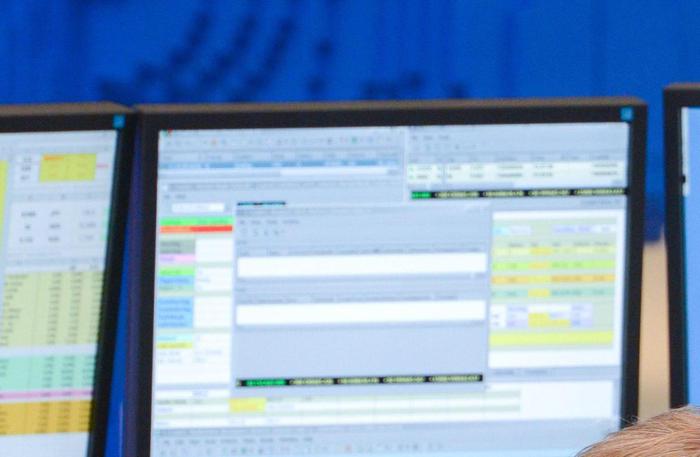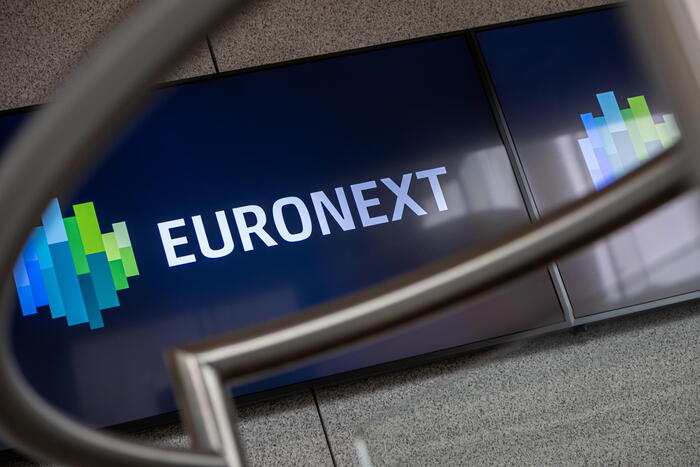Icon: enlarge
Digital product selection in an Intersport store in Berlin
Photo: André Wunstorf / INTERSPORT
Back on the go - this is how Germany feels ten months after the first shutdown: Shops, schools and public institutions are largely closed, contacts and radius of movement are restricted again.
The complaints from retailers also sound similar: the extended shutdown will drive fashion, shoe and leather goods retailers to ruin and result in ten billion euros in sales losses, say their associations.
A "half billion unsold fashion items" will pile up by the end of January, and numerous stores are now "facing the ultimate end".
Is everything gloomy like at the beginning of the pandemic?
Not quite: Despite the shutdown, the retail balance for the past year is surprisingly positive.
According to current estimates by the Federal Statistical Office, it achieved a record increase in sales of 5.3 percent compared to the previous year, more than ever since statistics began 25 years ago.
The reason: the booming online trade.
This grew by a record 31.8 percent in the past year - and, together with the growing supermarket and furniture business, moved the entire retail sector into the growth zone.
What has happened there?
Has the German retail sector been radically digitized?
And how do the lawsuits of fashion retailers fit in with this growth?
We asked - at stationary retailers from the furniture and clothing industry, at sporting goods stores and hardware stores.
In doing so, we noticed an astonishing digitization surge in the large, originally purely stationary chains - from IKEA to Hornbach, from Gerry Weber to Intersport.
They could benefit from this for years to come.
Run on the web shops
At the beginning there was the run on the web shops with huge leaps in sales: "The order processes in the online shop increased drastically with the beginning of the pandemic in Europe," says a Hornbach spokesman.
Sales in this channel increased by a good 80 percent from March to May - and the number of hits increased throughout the year.
That helped that Hornbach set up an online shop back in 2010 - and now offers around 200,000 items online, more than three times as much as a large stationary hardware store.
The online selection at the DIY chain Obi is also about three times as large as in the stationary stores.
Compared to the beginning of 2020, Obi makes "more than twice as much sales digitally without lockdown, in lockdown it is four to five times as much," reports the DIY chain.
Icon: enlarge
Advertising for online shopping at Ikea
Photo: Pius Koller / imago images
Ikea is now similarly well positioned: 95 percent of the furniture chain offers almost the entire range online.
This is now paying off: Suddenly, it was no longer important for the customer to touch the fabric of the sofa first, to look at the size of the table.
Online sales grew by almost 75 percent in the 2020 financial year to 861 million euros.
The Internet share of the overall business, which is already benefiting from the home trend, increased at Ikea Germany from 9.4 to a good 16.2 percent.
Stores are becoming shipping centers
Now both hardware stores and furniture stores are among the winners of the crisis.
Gerry Weber, a German chain of the Corona-afflicted fashion industry, does not want to disclose any figures on the online business, but also confirms a "significantly increasing" turnover.
And thanks to investments in e-commerce, 100 percent of the range is now also available digitally - before the start of the crisis it was only around 85 percent.
In order to sell from closed shops as well as possible, many dealers turned the shops into shipping centers
around.
Take the sporting goods retailer Intersport, for example: of 400 participating retailers,
whoever has
the goods available and is close to the buyer
receives the order from the central shop
www.intersport.de
.
The dealer packs and sends the goods on site.
The Intersport store operators receive a digital sales channel without additional investments in online marketing, technology or packaging material.
"Online sales roughly doubled during the Corona period," writes Intersport.
Shops show their inventory on the net
Ikea also combines central warehouses and furniture stores: "Thanks to Click & Collect, customers can also pick up the few items that are not available from our central warehouse in the furniture stores," writes the furniture company.
In addition, many stores are becoming digitally viewable warehouses: This applies to around 700 Intersport stores, the inventory of which can be accessed online.
"Of course, digitization is more than an online shop and› click & collect ‹," writes Hornbach.
Much more customers would have used the “self-scan” function via the app: They scan the products in the shopping cart with their smartphone and only briefly show the mobile phone at the checkout to pay.
"Advantage, especially in Corona times: greatly reduced contacts and waiting times at check-out," writes Hornbach.
Digital advice, better customer loyalty
And of course: better digital customer loyalty.
For the advice that is so popular in the hardware store, Obi is now using its app to find the right experts: "Advice on construction methods, implementation or product use takes place via chat or video," says Obi.
Hornbach also provides digital advice.
And by appointment, Gerry Weber offers "personal shopping via live video stream in the closed stores," writes a spokeswoman.
With the corona crisis, the boundary between stationary and digital business is becoming more and more blurred.
Hornbach therefore no longer divides sales into these channels.
»We cannot clearly assign a lot of our sales in the past year to one channel.
On the contrary: we probably only did this because we are relying on several channels and interlinking them, «says Hornbach.
The solution: combine online and offline trading
More than ever, the solution lies in the interlinking of online and offline.
Germany's retailers already knew this before the pandemic.
But many only approached the topic half-heartedly, leaving it with an often untraceable online shop with hardly competitive logistics.
After almost a year of the corona pandemic, not only have many more consumers become online shoppers - eco-concerns or not.
Retailers have also combined their brick-and-mortar business more closely with the Internet.
The chains that have been developing both channels together for years are doing particularly well.
If they are not unlucky enough to be part of the fashion industry: The fact that hardly anyone buys new clothes during the corona crisis is mainly due to the lack of occasions - and not to the lack of online presence.
Icon: The mirror







